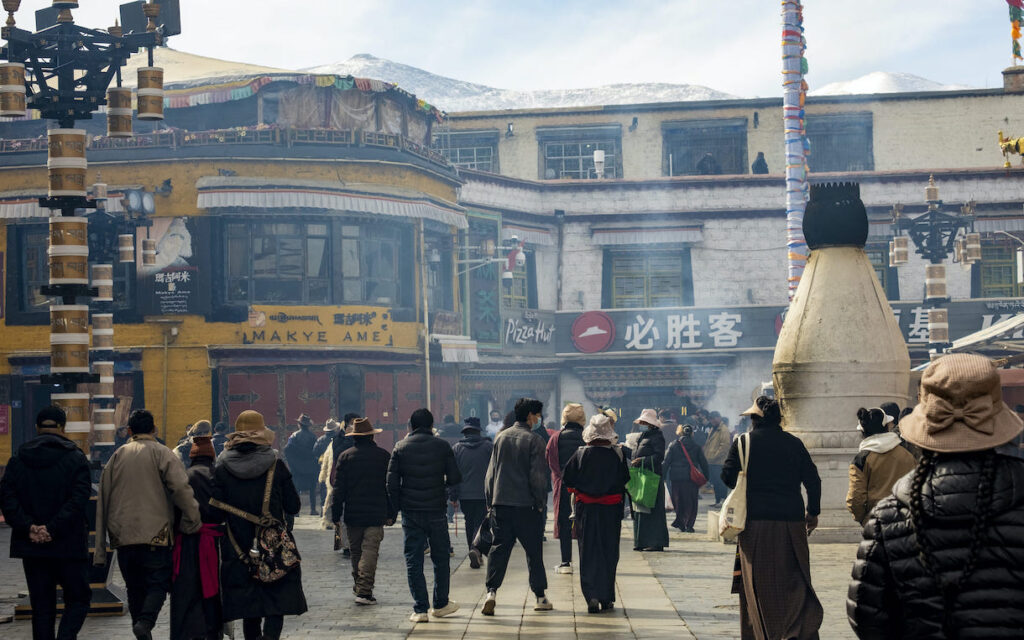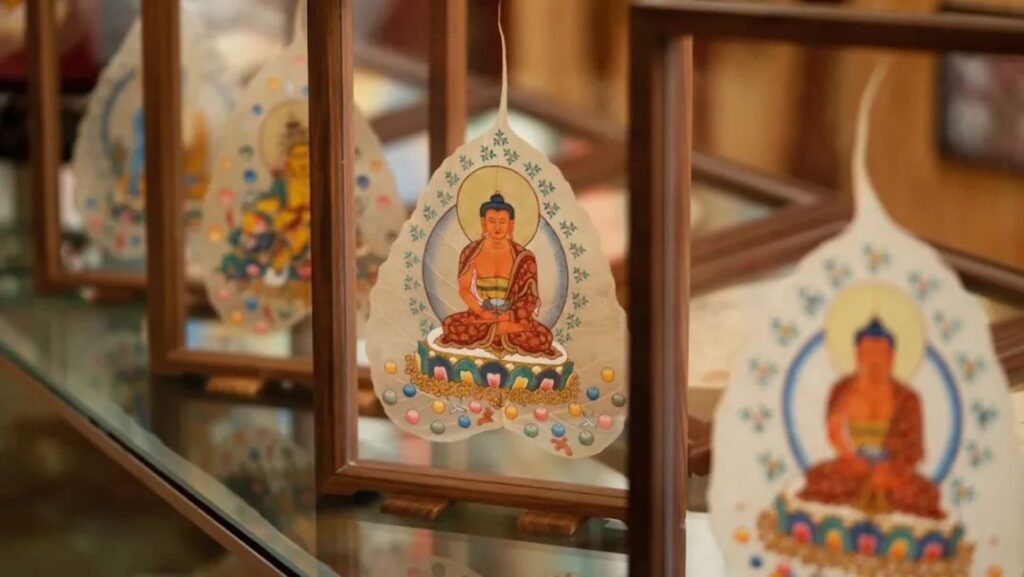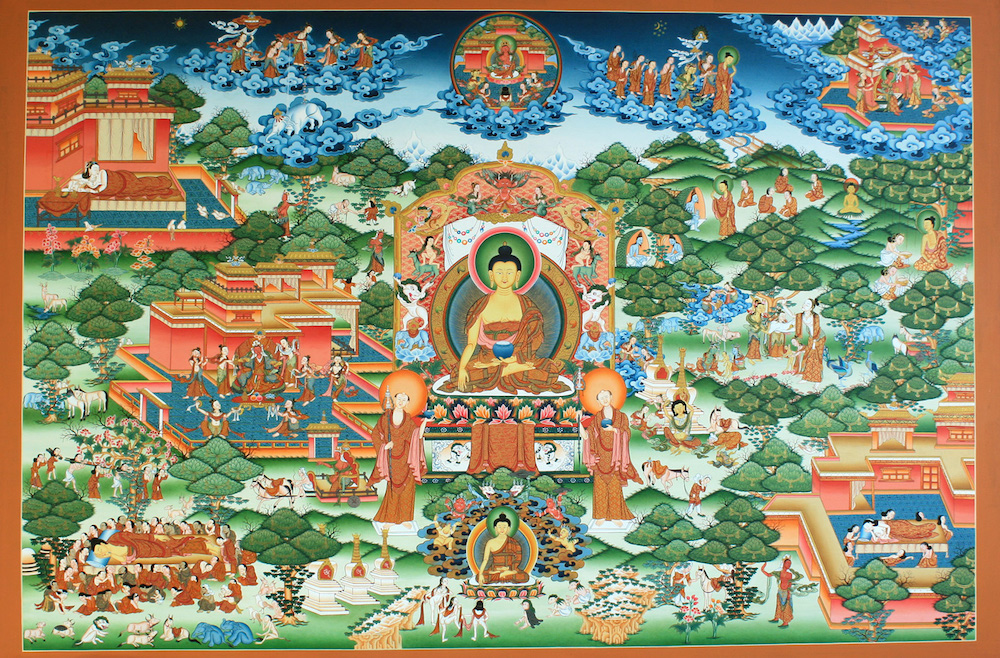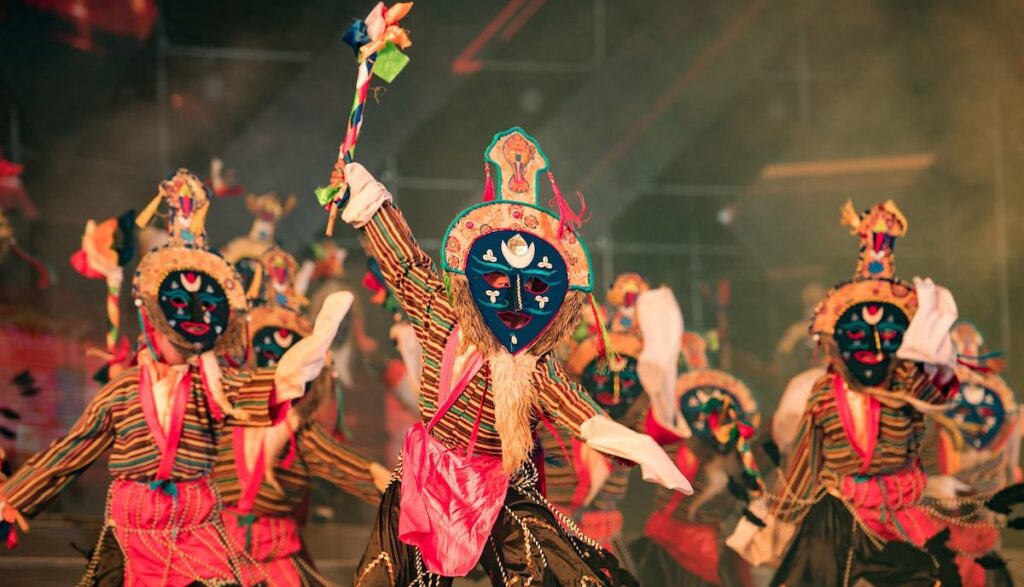Cultural festivals play a significant role in Tibet, both as religious and social events. These festivals are deeply rooted in Tibetan Buddhism and serve as a way for the community to come together and celebrate their traditions and beliefs.

A brief overview of the significance of cultural festivals in Tibet
Cultural festivals play a significant role in Tibet, both as religious and social events. These festivals are deeply rooted in Tibetan Buddhism and serve as a way for the community to come together and celebrate their traditions and beliefs.
One of the most important festivals in Tibet is Losar, the Tibetan New Year. It is a time of renewal and purification, where people gather to perform rituals and participate in various cultural activities. Losar is also a time for families to reunite and share meals together.
Another significant festival in Tibet is the Saga Dawa festival, which commemorates the birth, enlightenment, and death of Buddha. During this festival, devotees participate in religious ceremonies, perform acts of generosity, and engage in meditation and prayer. It is believed that any good deeds performed during this time will have multiplied benefits.
Cultural festivals in Tibet also serve as a showcase for traditional Tibetan arts, music, and dance. These performances not only preserve the rich cultural heritage of Tibet but also provide an opportunity for locals and tourists alike to appreciate and learn about Tibetan customs and traditions.

Furthermore, these festivals have a profound spiritual significance for Tibetans. They are seen as an opportunity to accumulate merit and purify negative karma. Many pilgrims travel long distances to attend these festivals, often prostrating themselves along the way as an act of devotion.
Tibet is known for its rich cultural heritage and vibrant festivals. If you’re planning a trip to Tibet, here are the top five Tibetan cultural festivals that you should consider attending.
The top five Tibetan cultural festivals
Tibetan New Year -Losar
Losar is the Tibetan New Year Festival, a vibrant and joyous celebration that holds great cultural and religious significance for the Tibetan people. The festival usually falls in February or March and lasts for 15 days, with the first three days being the most important.
During Losar, Tibetans gather with their families and loved ones to celebrate the arrival of the new year. They clean their homes, dress in traditional attire, and adorn their houses with colorful decorations. Monasteries are filled with prayers and offerings, and people make visits to temples to seek blessings for the upcoming year.
One of the highlights of Losar is the traditional Tibetan dance called “Cham,” which is performed by monks wearing elaborate masks and costumes. The dance is believed to chase away evil spirits and bring good fortune. Another popular activity during Losar is gambling, as it is believed to bring luck and prosperity for the coming year.

Food also plays a significant role in Losar celebrations. Families prepare special dishes, such as “guthuk” (a soup with various ingredients symbolizing good and bad luck) and “kapse” (deep-fried cookies), to share with their loved ones. Feasting together is a way to strengthen family bonds and express gratitude for the blessings of the past year.
Losar is not only a time of celebration but also a time for reflection and renewal. It is an opportunity for Tibetans to let go of any negativity from the previous year and embrace the fresh start that the new year brings. It is a time to set goals, make resolutions, and create positive intentions for the future.
Overall, Losar is a beautiful and meaningful festival that showcases the rich cultural heritage of Tibet. It brings communities together, strengthens familial ties, and instills a sense of hope and optimism for the year ahead.
Saga Dawa – Celebration of Buddha’s Enlightenment
Saga Dawa is a celebration that holds great significance for Buddhists around the world. It commemorates the birth, enlightenment, and death (or Parinirvana) of Lord Buddha. This month-long festival takes place in the fourth month of the Tibetan lunar calendar, usually falling in May or June.
During Saga Dawa, Buddhists engage in various religious activities and practices to honor the life and teachings of Lord Buddha. One of the most common practices is circumambulating sacred sites, such as temples or stupas while reciting mantras or prayers. This act is believed to accumulate merit and purify negative karma.
Another important aspect of Saga Dawa is engaging in acts of generosity and compassion. Many Buddhists take this opportunity to give alms to the poor or engage in charitable activities, as these actions are seen as ways to cultivate kindness and cultivate a sense of interconnectedness with all beings.

Additionally, Saga Dawa is a time for reflection and introspection. Buddhists often engage in meditation and study of Buddhist scriptures during this period, aiming to deepen their understanding of the teachings and develop their spiritual practice.
Overall, Saga Dawa is a time of reverence and devotion for Buddhists. It is an occasion to reaffirm their commitment to the path of enlightenment and to honor the life and teachings of Lord Buddha. Through acts of piety, generosity, and self-reflection, practitioners seek to cultivate virtues and attain spiritual growth during this auspicious month.
The Saga Dawa festival in Tibet is a significant and sacred event that holds deep religious and cultural meaning for the Tibetan people. It is a time of prayer, reflection, and acts of kindness, as well as a celebration of the birth, enlightenment, and death of Buddha.
The festival brings together communities, fostering unity and a sense of collective spirituality. It is a time for individuals to deepen their faith and engage in acts of compassion and generosity. The rituals and traditions associated with the festival are rich in symbolism and provide a sense of continuity and connection to Tibetan heritage. Overall, the Saga Dawa festival is a vibrant and cherished occasion that serves as a reminder of the importance of spirituality and compassion in everyday life.
The Shoton Festival
The Shoton Festival, also known as the Yogurt Festival, is an important traditional Tibetan festival that originated in Tibet, China. The festival dates back to the 11th century and is celebrated in the summer months, usually in late June or early July.
The origins of the Shoton Festival can be traced back to the time when Tibetan monks would observe a strict fasting ritual during the summer months. After the fasting period, the monks would be offered yogurt by the local community as a gesture of gratitude for their spiritual devotion.
Over time, this simple act of offering yogurt evolved into a grand celebration that included various cultural and religious activities. The festival became an opportunity for people to express their gratitude to the monks and to celebrate the end of the fasting period.
During the Shoton Festival, Tibetan opera performances are held, showcasing traditional music, dance, and storytelling. In addition to opera performances, there are also horse racing events, archery competitions, and various other traditional sports and games.

One of the highlights of the Shoton Festival is the unveiling of a giant Thangka painting. Thangka paintings are traditional Tibetan Buddhist artworks that depict various deities and religious figures. The unveiling of a giant Thangka painting is considered a deeply spiritual and auspicious event.
In recent years, the Shoton Festival has gained popularity beyond Tibet and has become a major tourist attraction. People from all over the world come to witness the vibrant celebrations and experience the rich cultural heritage of Tibet.
Overall, the Shoton Festival is a time for Tibetans and visitors alike to come together, celebrate, and pay homage to their cultural and religious traditions. It is a festival that embodies the spirit of gratitude, devotion, and communal harmony.
Ganden Thangka Festival
The Ganden Thangka Festival is a vibrant and culturally significant event that takes place at Ganden Monastery in Tibet. It is a celebration of Buddhist art and tradition, and it attracts both locals and tourists from around the world. The festival showcases stunning thangka paintings, which are intricate and detailed depictions of Buddhist deities and teachings.
These paintings are considered sacred and are created by skilled artists who spend months or even years on each piece. During the festival, these thangkas are displayed for public viewing, allowing attendees to appreciate the artistry and spiritual significance behind them.
In addition to the thangka paintings, the Ganden Thangka Festival also features various religious ceremonies and rituals. Monks and devotees come together to chant prayers, perform dances, and engage in other sacred practices. These rituals are meant to invoke blessings and promote spiritual well-being. The entire atmosphere during the festival is filled with devotion and reverence, creating a truly unique and enriching experience.
The Ganden Thangka Festival is not only a celebration of art and spirituality but also an opportunity to immerse oneself in Tibetan culture. Attendees can witness traditional Tibetan music and dance performances, try authentic local cuisine, and explore the stunning landscapes of Tibet. The festival offers a glimpse into the rich cultural heritage of the region and provides a platform for cultural exchange and understanding.
Overall, the Ganden Thangka Festival in Tibet is a captivating event that showcases the beauty of Buddhist art and culture. It is a celebration of spirituality, creativity, and community. Whether one is a devoted Buddhist or simply appreciates art and culture, attending this festival is sure to be a memorable and enriching experience.
Conclusion
In conclusion, experiencing Tibetan cultural festivals is of great importance for several reasons. Firstly, these festivals offer a unique opportunity to immerse oneself in the rich traditions and customs of the Tibetan people. By witnessing the vibrant dances, colorful costumes, and sacred rituals, one can gain a deeper understanding and appreciation of Tibetan culture.
Secondly, these festivals provide a chance to connect with the local community and foster intercultural exchange. Participating in traditional games, sharing meals, and engaging in conversations with Tibetans can create lasting connections and friendships.

Lastly, attending Tibetan cultural festivals allows individuals to witness the spiritual significance and devotion that is woven into every aspect of Tibetan life. From the chanting of mantras to the lighting of butter lamps, these festivals offer a glimpse into the deep spirituality that is central to Tibetan society.
Whether it’s the Losar Festival, Saga Dawa, or the Shoton Festival, experiencing these cultural celebrations can be a transformative and enriching experience that leaves a lasting impact on one’s understanding of Tibet and its people.

[…] • Expert Knowledge: Experienced guides provide deep insights into Tibetan culture, history, and […]